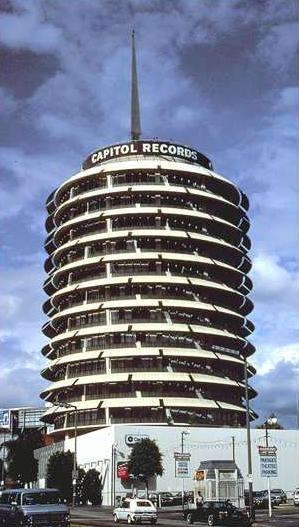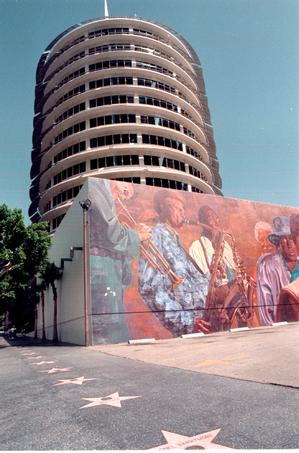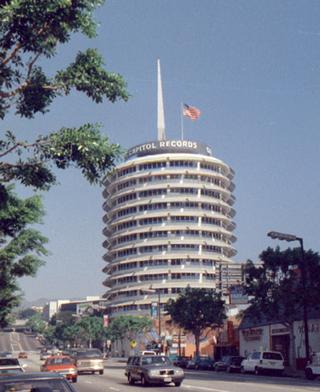Paul Whiteman and his band recorded the songs for Capitol's first release #101 on June 5, 1942, the instrumentals "I Found a New Baby" and "The General Jumped At Dawn." Whiteman recorded those first sessions at the C.P. MacGregor studio on Western off Wilshire Boulevard. Red Hot Jazz provides online all 8 sides that Whiteman recorded for the first Capitol record releases. The Whiteman band singer Larry Orenstein wrote lyrics about the D-Day invasion in 1944 to the tune of "The General Jumped At Dawn" for the song that was sung by the Golden Gate Quartet in the Warner Bros. film Hollywood Canteen. Martha Tilton was an early artist for Capitol who recorded "The Angels Cried" for Capitol #105 in 1942 and many others over the following years. Her complete Capitol recordings were released in 2000 on the 2 CD set "Liltin' Miss Tilton: Complete Capitol Recordings." Ella Mae Morse recorded "Cow-Cow Boogie" at the MCGregor studio for Capitol's second release #102 that became the studio's first million seller. By 1946 Capitol has sold 42 million records and was established as one of the Big 6 studios. In 1950 Capitol built its own studio on Melrose Avenue in Hollywood. In 1955, EMI acquired Capitol Records for $8.5 million. The Electric and Musical Industries (EMI) company was created in Britain in April 1931 by the merger of British Gramophone Company and the Columbia Graphophone Company. In November 1931 it had opened one of the world's great recording studios in North London at 3 Abbey Road. By 1955 Capitol was the fourth largest American record company, emphasizing popular music with Nat King Cole, Stan Kenton, Peggy Lee, Dean Martin. Frank Sinatra made 19 albums with Capitol 1954-62, with arrangers Axel Stordahl and Nelson Riddle. EMI decided to build a new studio in Hollywood that would be state-of-the-art equivalent to its Abbey Road studio in London.
The present Capitol Tower building was constructed in 1956 at 1730 Vine Street near Hollywood Boulevard. According to James Bayless, "In February of 1956, Capitol Records reached a long planned-for goal when West Coast operations were consolidated in a new combined studio and office building in Hollywood. The building is unique in a number of ways. It has already become a Hollywood landmark as it is the world's first office building in fthe form of a round tower. Now widely known as the 'Capitol Tower', the building was designed by Welton Becket, noted architect, and is a modern, striking, earthquake-resistant reinforced-concrete structure. It is 13 stories tall and 150' high, the maximum building height permitted in Los Angeles. The decor is in keeping with the outward appearance of the building. The ground floor, the only rectangular part of the building, is actually a separate structure which surrounds the tower and was joined to it after the entire tower was completed. It houses the Recording Department offices, tape-to-disk dubbing rooms, and three recording studios which were designed to be as modern and striking as the building itself."
Capitol Tower in 1977 |
Capitol Tower in 1997 |
Capitol Tower in 1997 |


